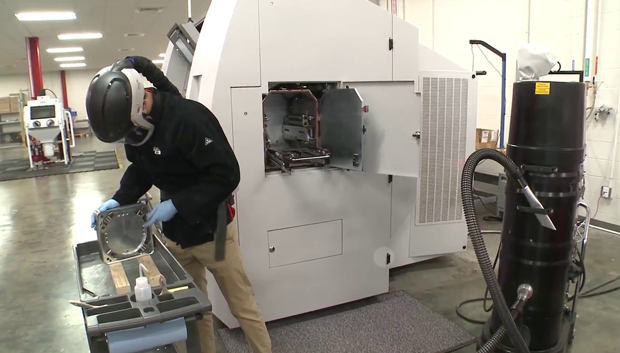Global safety enterpirse UL has announced that leading defense company Lockheed Martin is the first to achieve its UL 3400 certification for additive manufacturing.
With this approval, UL certifies that Lockheed Martin’s Additive Design and Manufacturing Center in Sunnyvale, California, meets all safety guidelines outlined in the document.
Thomas Malko, vice president of Engineering & Technology at Lockheed Martin Space, comments, “Lockheed Martin’s ultimate goal is to build satellites in half the time and cost, and this facility will accelerate that capability for our customers,”
“Now with UL certification, we can move forward with confidence, both within the company and with our customers, showing we are paving the way for the factory of the future.”

UL 3D printing safety
UL was founded in 1893 initially as the Underwriters Electrical Bureau. The company was incorporated in the state of Illinois in 1901 and published its first standard for safety (for tin clad fire doors) in 1903. Now, UL has evolved into a body that “certifies, validates, tests, verifies, inspects, audits, advises and educates” across the supply chain from manufacturers to consumers, and all parties in between.
In 2017, UL published its results of a 2 year investigation into the emissions of desktop 3D printers. Most recently, the company announced a partnership with Tooling U-SME to create a single source for training and professional additive manufacturing certification.
Additive manufacturing certification
UL 3400 certification was introduced in 2017. A 13 chapter document, UL 3400 details appropriate safety and hazard-mitigation procedures for the use and handling of 3D printers, powdered materials and overall facility operation.
Though a private safety and certification company, UL’s 3400 certification runs inline with other relevant standard bodies rather than in their direct competition.
UL 3400 in particular references applicable guidelines from the U.S. Occupational Safety and Health Administration, the National Fire Protection Association (NFPA), and ASTM International. Balu V. Nair, additive manufacturing lead development engineer at UL, states:
“Safety is designed rather than built,”
Before the development of UL 3400, “Employers, employees, local regulators as well as insurance companies who have to underwrite additive manufacturing facilities, were not fully aware of the inherent material and technology risks.”

Mapping standards in the industry
The development of standards for additive manufacturing is a necessary and rapidly evolving area of interest to the industry as a whole.
ASTM International launched the F42 Committee and Additive Manufacturing Center of Excellence to help accelerate standards development. Similarly, ASTM collaborator ISO has a Technical Committee on Additive Manufacturing that just added CECIMO, the European Association of the Machine Tool Industries, to its ranks.
With regard to 3D printing in the maritime and oil & gas industries, international classification society DNV GL recently launched its class approval of manufacturer (AoM) program.
Melissa Albrecht, an additive manufacturing global program manager at UL, concludes, “The introduction of new advanced manufacturing technologies has the potential to transform modern industrial production,”
“We are eager to continue UL’s mission of advancing safety and quality through the next industrial revolution.”
For all the latest updates of standards and policy making for additive manufacturing subscribe to the 3D Printing Industry newsletter, join us on Facebook and on Twitter.
For new opportunities across additive manufacturing visit 3D Printing Jobs.
Featured image shows a Lockheed Martin F-35B advanced fighter aircraft for the British Royal Air Force and Royal Navy. Photo via Lockheed Martin



